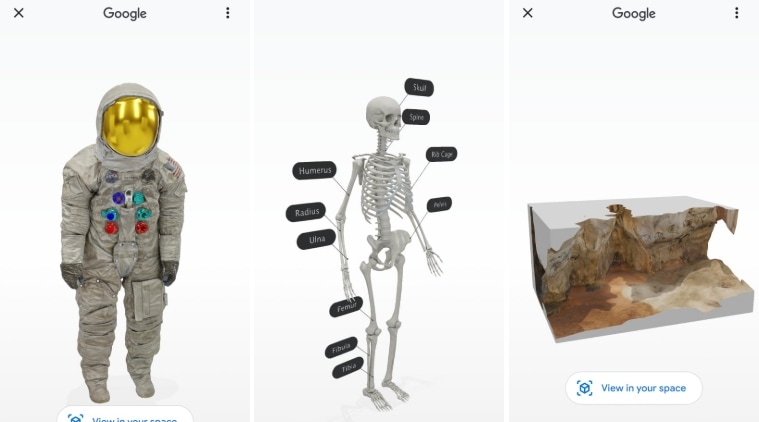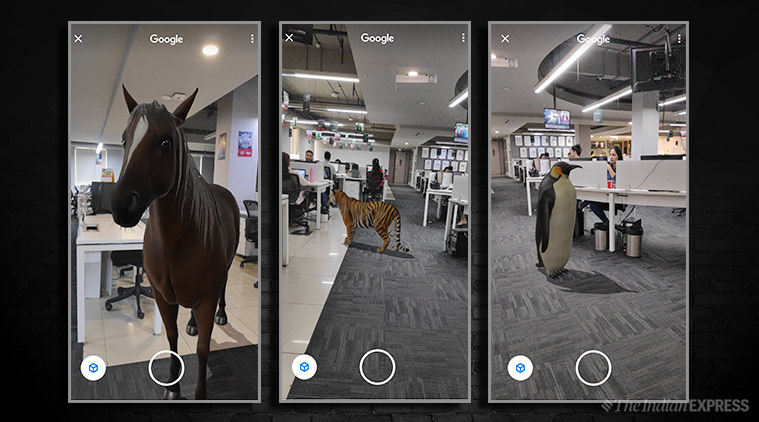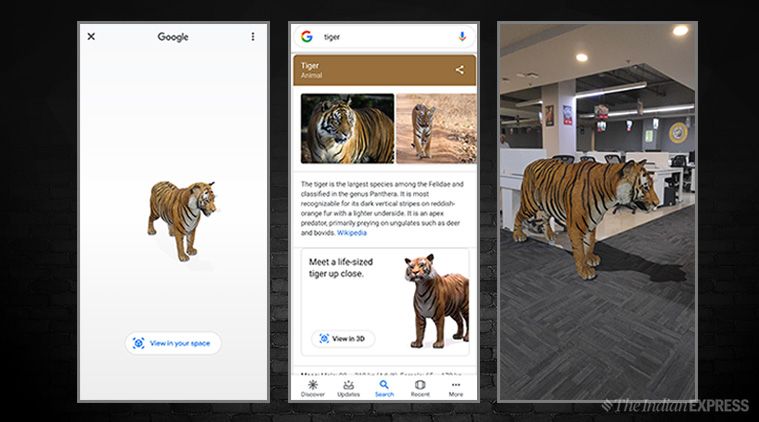Google 3D animals: Bring more animals, human anatomy at your home
Google has added loads of new animals and non-animals search results that are compatible with AR-enabled 3D search results.
 Google AR-enabled 3D search results add new objects. (Screenshot taken from Google)
Google AR-enabled 3D search results add new objects. (Screenshot taken from Google)
Last year, Google introduced AR-enabled search results with 3D models — a feature that lets you search for an animal or bird, take a look at their 3D model in search results and bring them into the real world using an AR supported smartphone. The Google 3D feature has got even more popular during the lockdown when most of us are at home, in constant need of entertainment. The tech giant has also updated its list of supported objects that are available for an AR experience.
Animals and Birds available in AR
Among the land animals, Google allows AR experience for tiger, giant panda, leopard, goat, cheetah, pony, brown bear, timber wolf, Shetland pony, python, Arabian horse, raccoon, hedgehog, and deer. Among underwater and wetland animals, the AR experience is available for Mallard duck, alligator, great white shark, octopus, angler fish, and sea turtle.
It’s AR of the tiger!
If you’ve got an AR-enabled phone, you can now bring select animals right into your space for a safari (or safe snuggle) with Search. pic.twitter.com/kWpudETgeq
— Google (@Google) May 31, 2019
It also includes birds such as the macaw, emperor penguin, and eagle as well as house pets including pomeranian, golden retriever, labrador, rottweiler, French bulldog, pug, and cat.
There’s something more than animals now
At the I/O 2019, Google confirmed working with companies like New Balance, NASA, Samsung, Visible Body, Volvo, Target, and Wayfair to get them to bring their own AR-enabled 3D content in Search. Google has now included more non-animal subjects in its AR experience.
You can now see the Chauvet cave and Neil Armstrong in 3D and bring them to the physical world using AR. Google says that the Apollo 11 command module is also available in 3D search but we couldn’t find it. Maybe, it will be available in the coming days. Google has also added loads of cellular structures and human anatomical systems to the 3D AR experience, which may not only serve as a fun experience but also help students with their studies.
 Now bring animals in your living room using Google’s AR-enabled 3D search results. (Express photo)
Now bring animals in your living room using Google’s AR-enabled 3D search results. (Express photo)
Human anatomical systems: Human digestive system, excretory system, peripheral nervous system, urinary system, skeletal system, respiratory system, endocrine system, female reproductive system, male reproductive system, nervous system, lymphatic system, integumentary system, muscular system, and circulatory system.
Cellular structures: Mitochondrion, nuclear membrane, fimbria, bacterial capsule, plasmids, central vacuole, prokaryote, endoplasmic reticulum, bacterium, eukaryote, plant cell, rough endoplasmic reticulum, nucleolus, flagellum, cell membrane, animal cell, chromatin, cristae, plasma membrane, Golgi apparatus, ribosomes, smooth endoplasmic reticulum, cell wall, and cisternae.
How to watch AR-enabled 3D models in search results
*Open Google app or google.com on Google Chrome on your Android
*If you are an iPhone user, open Safari or Chrome app and navigate to google.com
*Search for the animal, bird, or non-animal subject you want to see
*Objects available for AR experience will show a small box with “View in 3D” option
 How to watch Google 3D animals at home. (Express photo)
How to watch Google 3D animals at home. (Express photo)
*It will open an animated 3D model of the object on your phone’s screen
*To interact with the 3D result in AR, tap on “View in your space”
*Now scan the ground in your surrounding
That’s it. Now the animal or the Apollo 11 command module will be teleported from your phone’s screen to the physical world.
Google 3D AR results: Is your device compatible?
To see 3D search results on your phone, you need Android 7 or later. In order to see 3D results in AR, your Android device should support ARCore. You can check if your phone supports ARCore right here. The iPhone users, need to have iPhone 6s or later and iOS 11 and up.







